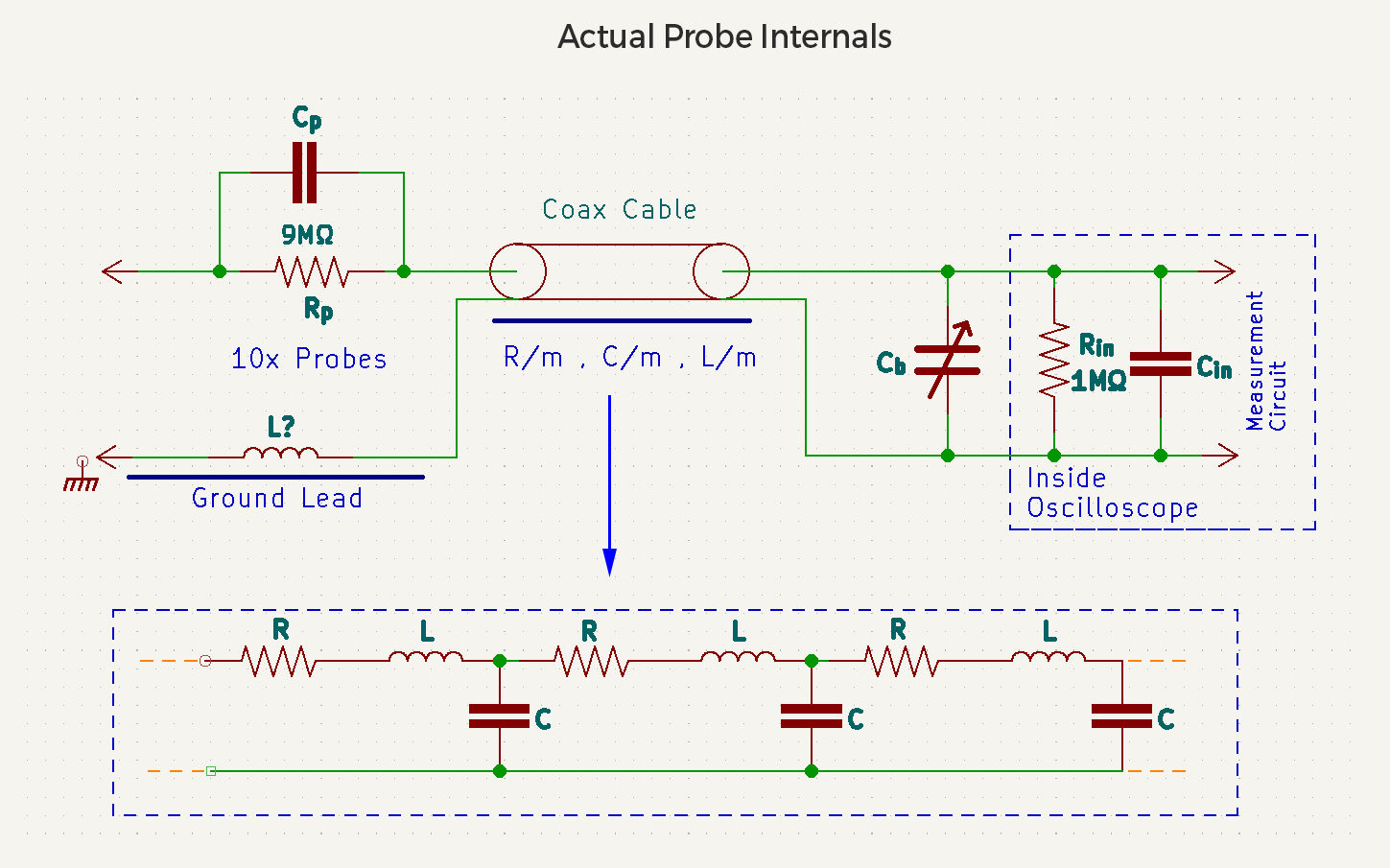
Till now, we have built on the different basic parts of the probe and how they work. Let’s add the coaxial cable on the input side which we had omitted till now. Till now we were assuming that the cable is a straight short from the tip to the input of the scope. That’s not the case in real life. A coax cable used in the probes(Around 1m in length) is fundamentally modelled as a transmission line with some finite capacitance(becoz its a metal with a dielectric) and finite inductance(becoz its a wire) per unit length. Ideally what we want is a flat freq response(BW graphs from earlier posts) throughout a large bandwidth to ensure that the amplitude shown on the scope is consistent in the entire range.

But when you use a lossless coax cable with a usual characteristic impedance of 50Ohms with a scope input impedance(Cin) which is basically changing with freq(again due to imp of Cin) we see a non-flat response on amplitude on higher frequencies. Why? Because of transmission line reflections. Reflections happen because the input imp. of the scope is not matched with the transmission line which is time-varying. This will cause the input signal to move back and forth from the source and load and produce ringing. So to get higher bandwidth(aka flat response longer) what the brilliant engineers (I believe from Tektronics in the late 60s) did was that they replaced the 0Ohm wire with a thinner Ni-Cr wire which has finite resistance per unit length of around 100-200Ohms/m. They made the overall cable thinner which improved the flexibility too. As size reduces, the capacitance of the cable also reduces implying faster response times. This lossy coaxial cable changes its impedance with freq when you model it as a transmission line. Hence it reduces the reflections in the overall circuit thus ensuring a flat BW across the spectrum. This is how you design a high BW probe.
This might have been a lot of technical than usual. I would highly suggest reading a paper called The Secret World of Probes from 2009 which illustrates this with simulation results. Its a great supplementary read.
